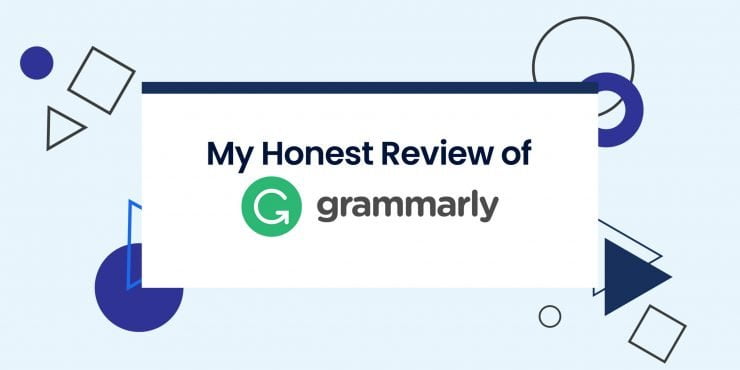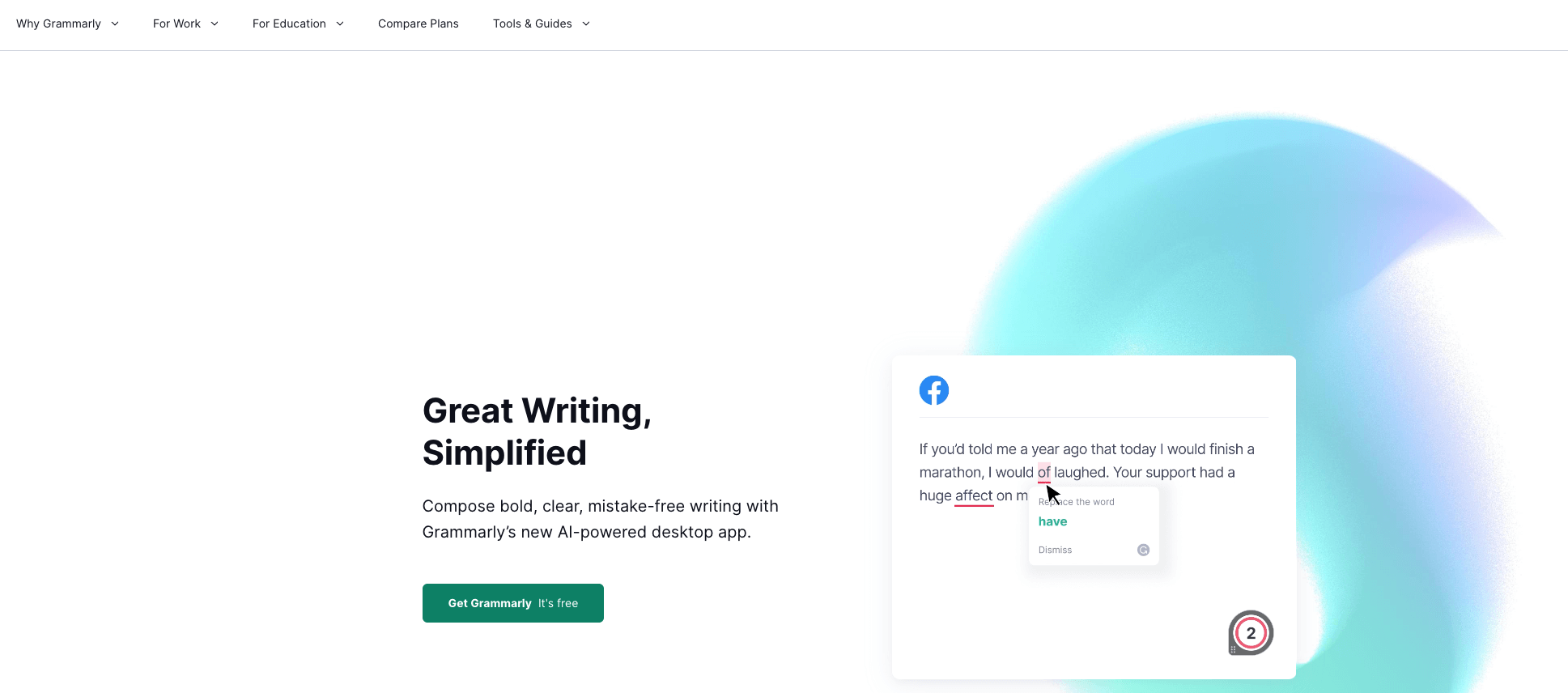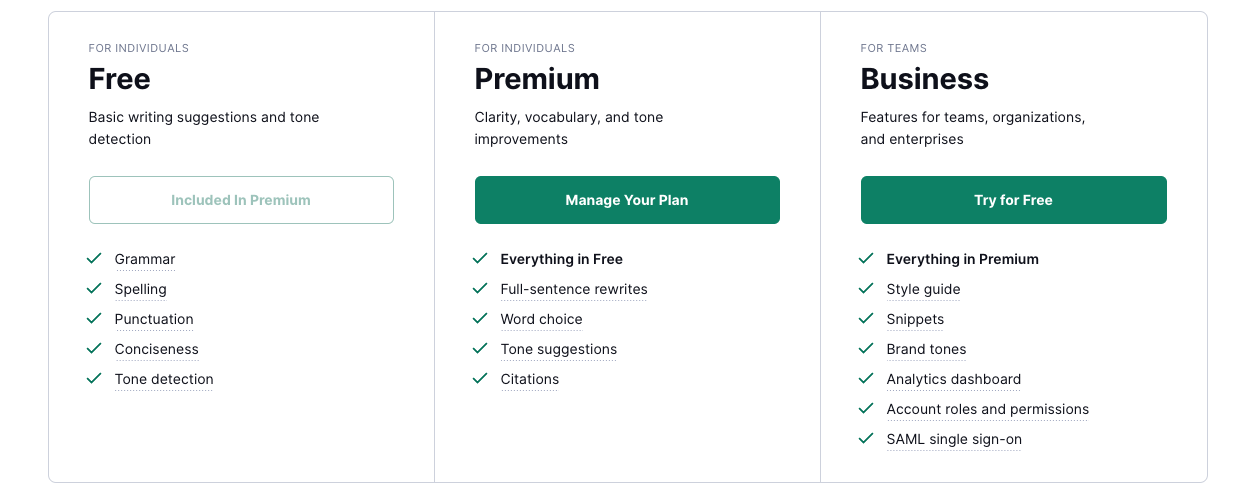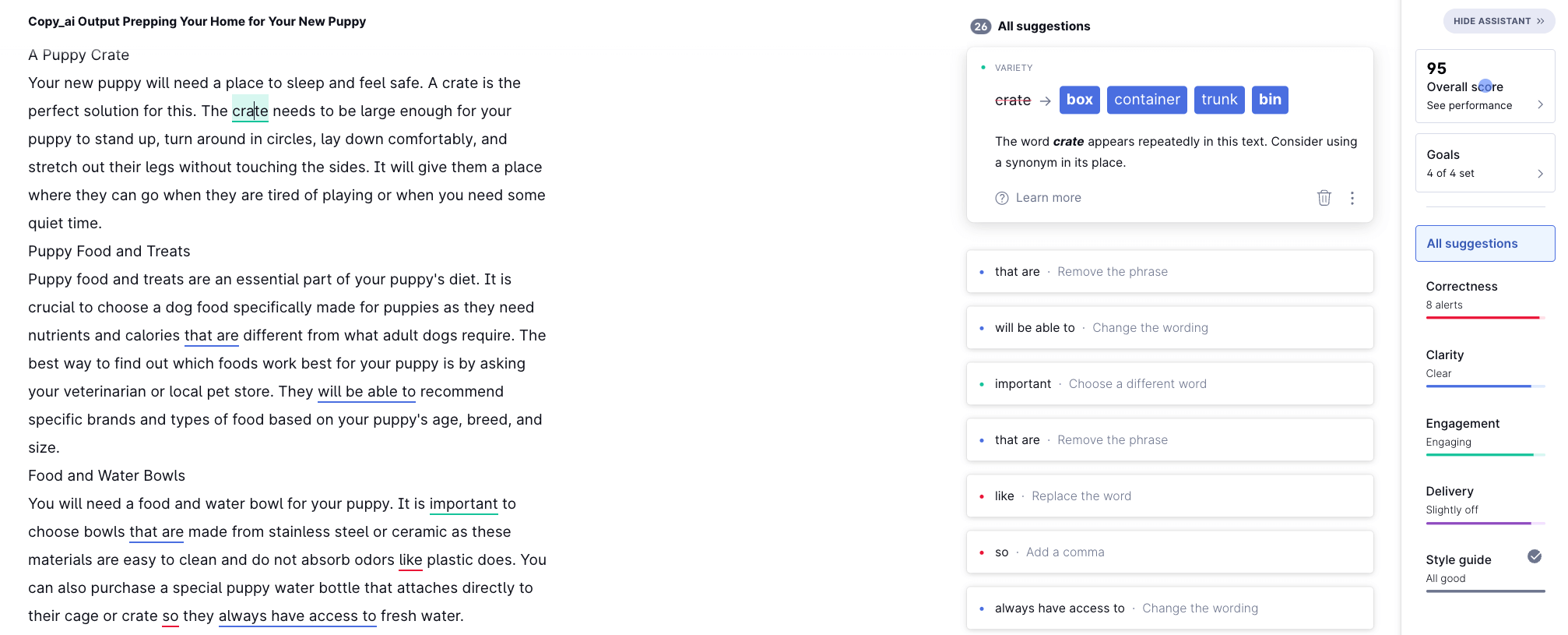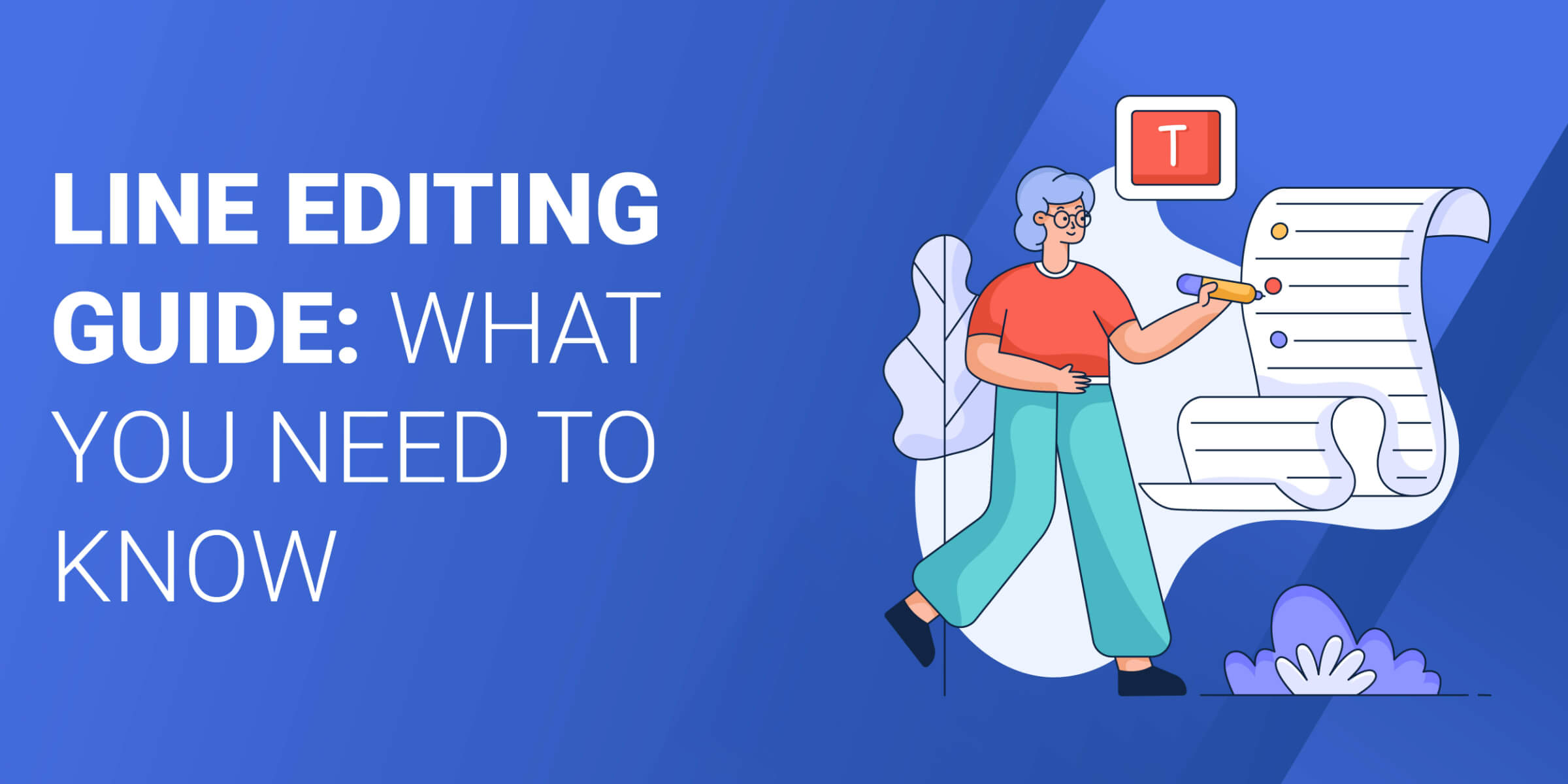As a marketing writer and editor, I know what you’re looking for in a grammar and plagiarism checker.
Grammarly is just one of those tools I have no problem recommending. In fact, I use it on a daily basis. (Hint: I used it to help me edit this very article.)
Whether you’re editing AI-generated text or human-written articles, this powerful tool promises to help you improve your writing and catch grammatical errors.
We offer this website completely free to our visitors. To help pay the bills, we’ll often (but not always) set up affiliate relationships with the top providers after selecting our favorites. However, we do our best not to let this impact our choices. There are plenty of high-paying companies we’ve turned down because we didn’t like their product.
An added benefit of our relationships is that we always try to negotiate exclusive discounts for our visitors.
Grammarly Review + Video Walkthrough
What Is Grammarly?
Grammarly is a cloud-based, AI tool that helps improve writing by checking for spelling, grammar, punctuation, clarity, engagement, and delivery mistakes in English texts. It also detects plagiarism and provides suggestions for improvement.
Basically, Grammarly leverages AI to improve human-written or AI-generated text in terms of grammar, style, tone, and more.
Grammarly can be used as a standalone application, browser extension, or smartphone keyboard and allows users to customize their writing style, tone, and context-specific language.
There are several ways to customize Grammarly to your needs and application.
Who Should Use Grammarly?


This tool is extremely versatile. Anyone who needs a grammar checker for everything from emails to articles can benefit from using Grammarly.
It also works great for non-native speakers and helps them correct errors in their text while learning to use English more effectively.
Anyone from a low-level knowledge of grammar to editors with expert knowledge can benefit from using Grammarly. Who doesn’t want a little help finding mistakes or typos?
Grammarly Review


I’ve used this tool as a student and professional for several years.
The browser extension catches my mistakes in emails and while using Google Docs. I can use a more robust grammar correction tool than the application’s built-in checker when using Microsoft Word or other word processors.
There is just a lot to like about this application.
When you’re in Grammarly's web-based application, downloadable app, or browser extension, you’ll notice four headings at the top of the list of errors Grammarly has found: correctness, clarity, engagement, and delivery.
Each of these headings also is color coordinated so that you can, for example, spot a red underline in the text and know that it goes with a correctness error. Having this color coding for errors really helps me to know the types of errors other writers or I make frequently.
Along with the error headings is the ability to set your goals for the text through domain, intent, audience, and intent. You can really tailor how strict on grammar your text is or even check to make sure your tone and your audience go together. These are just a couple of areas of functionality. But, if you’re writing a more anecdotal article, you can set your intent to “tell a story,” and Grammarly will make suggestions accordingly. The same is true if you’re trying to write a “how-to” or even an essay. The customization really helps to narrow the suggestions that Grammarly offers.
Another aspect that I like is the explanation of the error. This could just be the English teacher in me coming out. But if you don’t know why something is a mistake, you’re bound to repeat it. So, if you click first on the error and then on the lowercase ‘i’ inside a circle, you’ll be able to access Grammarly’s reason why the error is wrong as well as examples of correct and incorrect usage. This extra feature goes a long way to helping writers of all types improve.
Now, while the suggested corrections from Grammarly are usually spot on, you can’t blindly trust them. This is true of any grammar or spell checker. A few of the corrections aren’t actually correct in certain instances, but I only spot those moments because I’m an editor. On the flip side, there are many times that I will find errors that Grammarly doesn’t. However, for incorrect or offensive suggestions, the developers even have an option (the button with 3 dots) to let Grammarly know that those popped up.
Grammarly Pros
- Improves writing quality. Grammarly checks for spelling, grammar, punctuation, clarity, engagement, and delivery mistakes in your text and provides suggestions to improve writing quality. It also helps you learn from your previous mistakes.
- Detects plagiarism. Grammarly can detect plagiarism in your text and alert you to potential issues.
- Customizable. Users can really customize their writing style, tone, and context-specific language, making it easier to write in a style that suits your needs.
- Easy to use. Grammarly is simple to use and can be accessed through a standalone application, browser extension, or smartphone keyboard.
- Saves time. By identifying and fixing writing errors, Grammarly can save you time and effort in the editing and proofreading process. Even as a seasoned editor, I run texts through Grammarly all the time to make sure that I haven’t missed anything.
Grammarly Cons
- Cost. Grammarly’s Premium plan can be expensive on a month-by-month basis for some. The best deal is to pay for the year.
- Limited to English. Grammarly only supports English, so it won’t be suitable for users who write in other languages.
- Dependence on software. Grammarly is only as accurate as the algorithms and data it uses. It might not catch all errors and may make mistakes of its own.
- Over-reliance. Some users may become too reliant on Grammarly, leading to a decreased ability to identify and correct writing errors without its assistance.
- False sense of security. Grammarly may give users a false sense of security, leading them to believe that their writing is flawless when it may still contain errors.
Grammarly Pricing
Grammarly Premium Pricing
- Monthly: $30
- Quarterly: $60
- Yearly: $144
Grammarly Business Pricing
- Monthly: $25/member
- Yearly: $180 ($15/month/member)
For the Garmmarly business plan, they offer discounted pricing once you hit a team size of 10 members. Please note, Grammarly business is ideal for teams of 3 or more.
Free vs. Premium Plans
With the Free plan, Grammarly focuses on grammar or misspellings (correctness) and clarity. It works well just at the Free level. As a student on a budget, I used this plan for quite some time. I frequently recommended that my students use the app before completing any written work.
Naturally, the Premium plan has a great deal more functionality.
In addition to the features of the Free plan, the Premium plan catches more issues that they set under the headings of engagement and delivery. These headings include areas like passive voice, better word choice, or restructuring sentences. If you’ve ever struggled with picking just the right word or having more confident language, these types of suggestions are extremely helpful.
The Premium plan also includes plagiarism checking and citation checking. While citation checking is more helpful for students and those in academia, the plagiarism checker is especially helpful for anyone using AI-generated text, which has a higher probability of being plagiarized. So, if your AI writing tool does not have a plagiarism checker built in or if it charges you extra per word, you can leverage Grammarly’s premium plan instead and get a robust grammar checker in the process.
Is Grammarly Premium Worth It?
Yes! Upgrading to Grammarly’s Premium plan is definitely worth it for those who need grammar help beyond writing an email.
If you’re editing or writing articles or essays, basically anything that needs to be polished and professional, you’re going to want to upgrade to Premium.
Integrating Grammarly to Your Workflow
Given the numerous applications Grammarly offers, integrating it into your workflow is incredibly easy. For example, if you already use Microsoft Word to write, you can download Grammarly. It will automatically pop up for use anywhere you write text. Once you’re signed into Grammarly, it’s just as seamless to use as Word’s editor.
So integrating it into your workflow should feel pretty seamless, almost like you’ve found a tool that simply works better than the one you originally had.
In my personal workflow, I don’t use Grammarly until I’m almost ready to send it out for publication. My editing process starts with rearranging or restructuring a text as needed. Once I’ve moved things around, reformatted sections or headings, etc., I will start looking at what Grammarly is suggesting.
Grammarly Alternatives
ProWritingAid
One of Grammarly’s biggest competitors that I use regularly is ProWritingAid, which works really well for fiction or creative writing as well as articles and essays. It has browser extensions, multiple integration options like Grammarly, and a direct Add On to Google Docs.
It also offers plagiarism checks and citation checkers, and ProWritingAid offers a variety of options for customization for the type of writing you’re doing. It even includes author comparisons to see how you’re stacking against other professionals.
Plans:
- Free
- Monthly: $30
- Yearly: $120
- Lifetime: $399
FAQs
Is Grammarly worth it?
Yes! Ensuring your writing is polished–no matter the context– is critical in our digital, text-heavy era. Grammarly has a ton of great features to use.
Does Grammarly have a free trial or plan?
Yes! Grammarly has a free plan that you can use an unlimited number of times, but to get access to all Grammarly offers, you need to upgrade to the Premium plan.
Will Grammarly make my text error-free?
No. No grammar checker will ensure that your text is free of errors. It will just help you identify and offer solutions for common errors.














